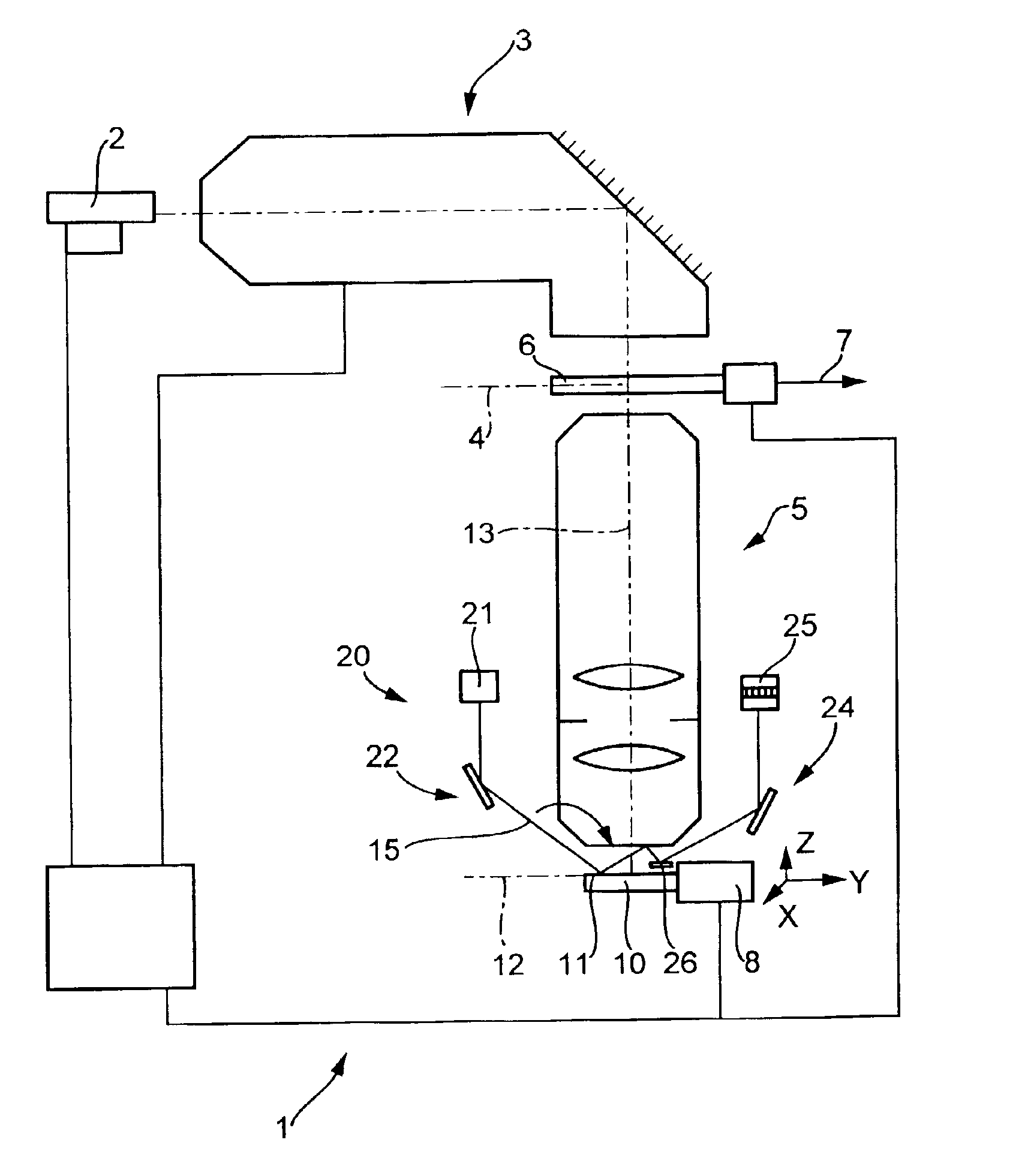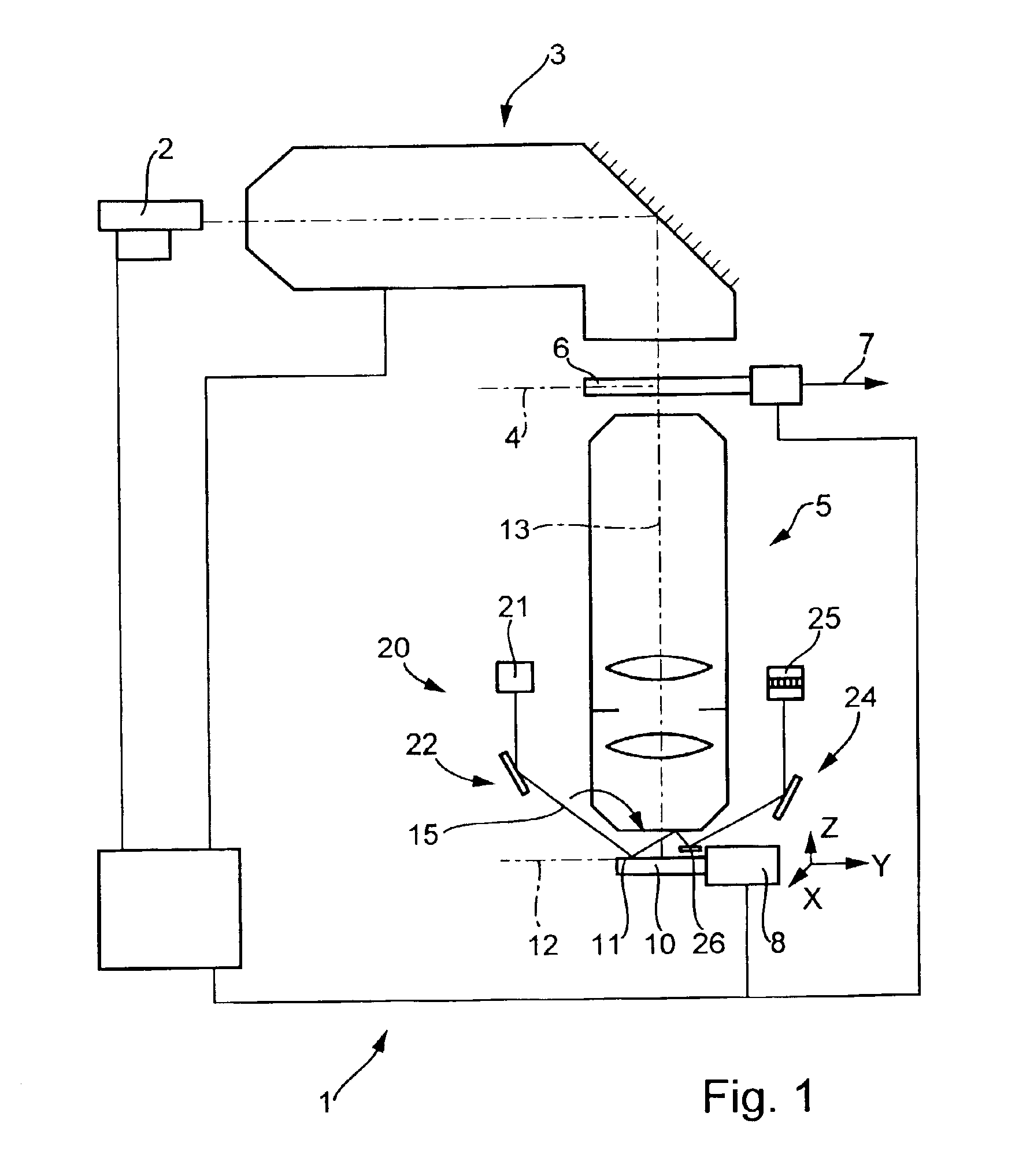Method for focus detection for optically detecting deviation of the image plane of a projection lens from the upper surface of a substrate, and an imaging system with a focus-detection system
a technology of imaging system and image plane, which is applied in the field of focus detection for optically detecting deviation of the image plane of a projection lens from the upper surface of a substrate, can solve the problems of not much space remaining available, and the working distance of focus detection systems is also relatively large, and achieves short working distances and high image-side numerical apertures.
- Summary
- Abstract
- Description
- Claims
- Application Information
AI Technical Summary
Benefits of technology
Problems solved by technology
Method used
Image
Examples
second embodiment
A second embodiment, wherein the focus-detection system utilizes a single reflection at the substrate's upper surface and two reflections at the exit surface of a projection lens will be discussed, based on FIG. 3. The layout of light source, input-coupling system, output-coupling system, and detector may be similar to, or identical to, the layout shown in FIG. 1. The system includes two prisms 126′ and 126″ whose reflective base surfaces 127′, 127″ are arranged outside the final surface 115 of the projection lens, in the space between the upper surface 111 of the substrate and the plane passing through the final surface of the lens 115, that are symmetrically arranged about the optical axis 113 and serve as auxiliary reflecting surfaces. These prisms 126′ and 126″ are rigidly attached to the lens' mount 105 and mounted a short distance above the upper surface 111 of the wafer. The system allows using a symmetric beam path for the measuring beam 123 that has a single reflection at t...
third embodiment
In the case of those systems shown in FIGS. 1 and 3, the light employed for measurement traverses the path traversed by the measuring beam once only. A third embodiment where the path traversed by the measuring beam is traversed twice will be discussed, based on FIG. 4. Its focus-detection system includes an optical system 224 that both couples the measuring beam 223 into the focus-detection system and couples it out of the focus-detection system. A prism 226 whose base surface is parallel to the image plane and serves as an auxiliary reflecting surface that obliquely deflects the light employed for measurement in the direction of the substrate's upper surface is arranged on the side of the input / output-coupling optics 224, between the plane of the planar exit surface 215 of the projection lens 205 and the upper surface 211 of the substrate. Following a total of two reflections at the exit surface 215 and a single reflection in the vicinity of the upper surface 211 of the substrate,...
PUM
 Login to View More
Login to View More Abstract
Description
Claims
Application Information
 Login to View More
Login to View More - R&D
- Intellectual Property
- Life Sciences
- Materials
- Tech Scout
- Unparalleled Data Quality
- Higher Quality Content
- 60% Fewer Hallucinations
Browse by: Latest US Patents, China's latest patents, Technical Efficacy Thesaurus, Application Domain, Technology Topic, Popular Technical Reports.
© 2025 PatSnap. All rights reserved.Legal|Privacy policy|Modern Slavery Act Transparency Statement|Sitemap|About US| Contact US: help@patsnap.com



